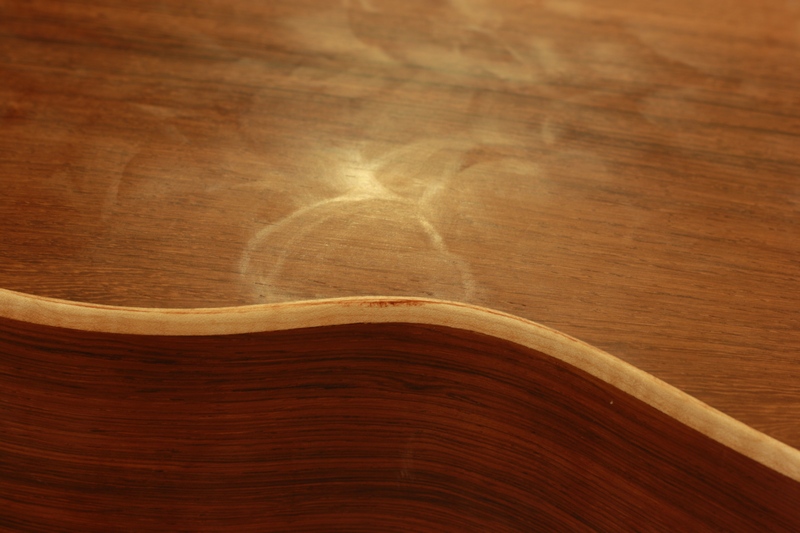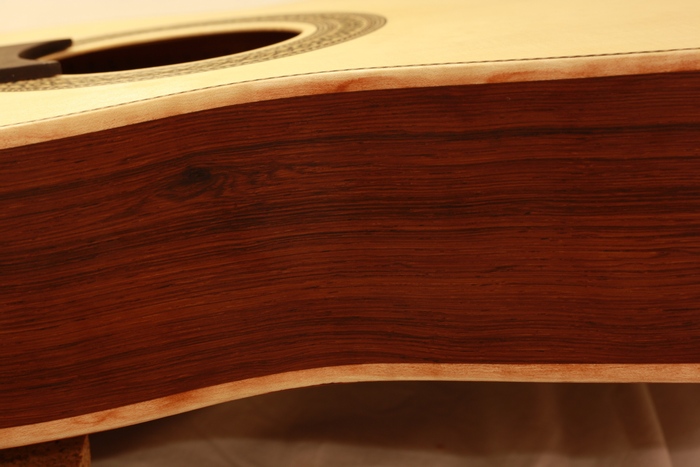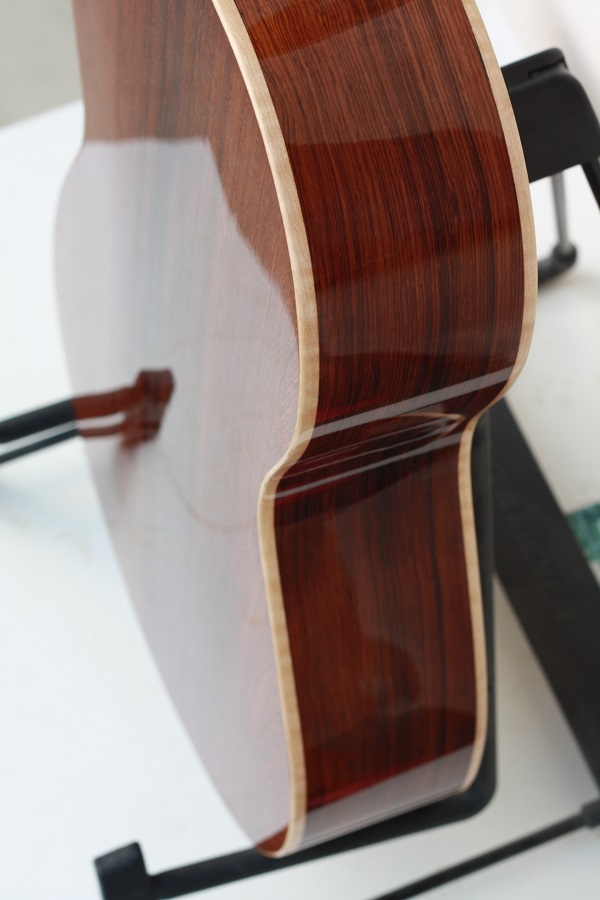|
estebanana -> RE: stained maple binding (May 22 2017 23:15:32)
|
Good to hear it did not get the binding dirty.
This is one of those small operations that you learn a way through. A couple suggestions that may help. Treat the edges of the pumice process by flicking your hand movement towards the middle of the back away from the edge. So you are not rolling the pumice slurry over the edge. Also I think about bright bindings and I put more shellac on before any pumice to get a better seal on the rosewood. The rosewood is very likely still giving up color through the shellac sealing, there is not enough rosewood 'saw dust' to make that much color.
When FP a rosewood guitar I put a lot of shellac on first as a seal. I use a brush, paper towel or a folded piece of terry cloth and lay it on. If the bindings are already slick with shellac the first applications move right over the binding and any color that comes off can be wiped off. I also waste quite a bit of towel applicator by constantly folding under the color stained areas. You know when you've gotten the color sealed because it's not coming off on your applicator tool. Then I go a little farther and put on more shellac, because when you pore fill it is quite an abrasive process so extra shellac keeps the color in.
But here's where I go off course from regular FP process. I let the wiped on shellac dry for a couple days or even a week and let it get hard. Then I flat board sand it with a woven abrasive made for auto body work. The abrasive is similar to the 'micro mesh' abrasives, but it is woven. This material cuts and levels the hard shellac and it is made to 'track' over shallow spots and cut higher surfaces more accurately then sand paper. After a good leveling I put on more wiped shellac and use the woven abrasive again the next day. Then I pore fill and with a light hand pressure. Like a wiping perpendicular to the grain direction and pushing it across the grain and down in.
The product is called Assilex , it made by Kovax a Japanese company. You can get it on Amazon in most parts of the world. The SkyBlue color Assilex is equivalent to 600 sand paper, but it cuts much, much faster and does not leave scratch marks, the woven fibers are like millions of microscopic scraper blades. After a few days of wiping on shellac and cutting it back level you have virtually bodied up shellac on the guitar and can pore fill over thicker seal. Then cut that pore filler back and spot pore fill where you have rough spots. After that then you go to end the bodying process by regular French polish work with a pad. One or two sessions finishes the bodying and moves right into the final work.
I really, really dislike color rosewood bleeding, I just want the color sealed in no matter what. So I've been using the SkyBlue woven abrasive since I found it in 2011. I did an online search for abrasives of different kinds and found that one. I called the dealer and they sent my a sample, after that I ordered it by the box. I showed it to a guy who French polished professionally and he began using right way. He asked me to keep it a secret while he was handling a lot of work by a certain maker. But he's not doing as much so I've shared it lately.
The whole Clark / as told to Milburn process is great, but over complicated. I wanted to simplify it from the beginning. Once I had the woven abrasive I just rewrote the rule book for myself.
You just figure out a way to work the edges without the bleeding. And rosewoods sets are different in how much color they release, some are really not colorfast and bleed like crazy and other sets not at all.
I have some friends who make steel strings guitars who like to wipe out some of the color before binding, but I think there always more in there. I think the best you can do is shellac seal until there's minimal or no color coming off.
|
|
|
|



